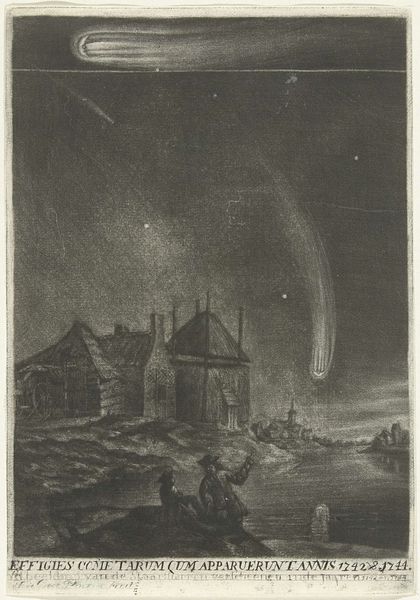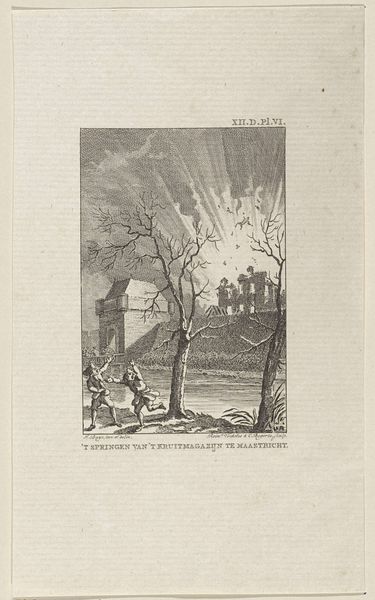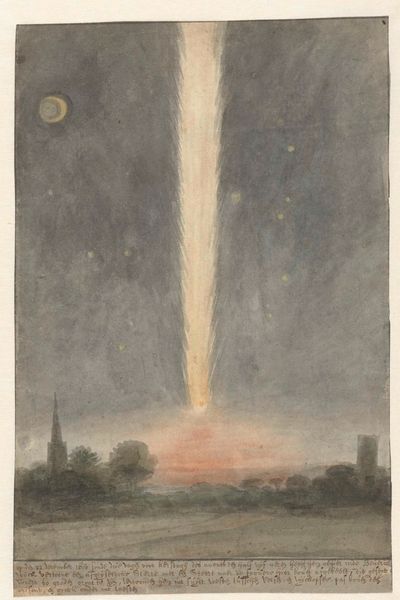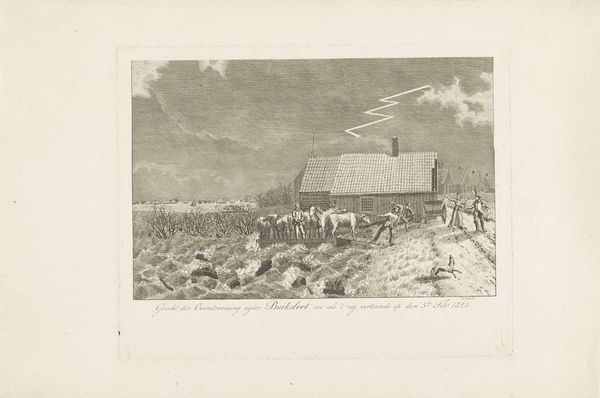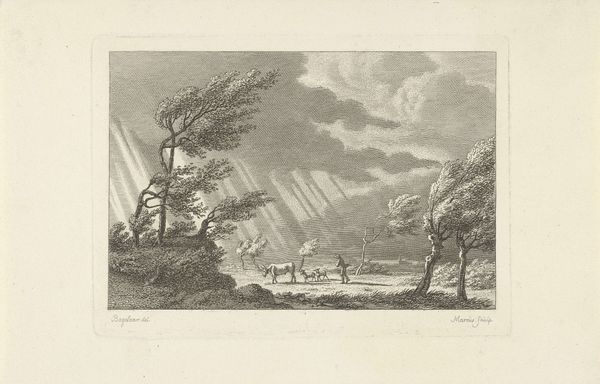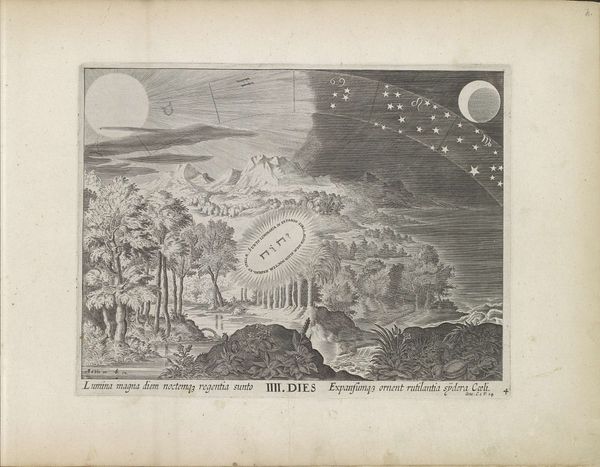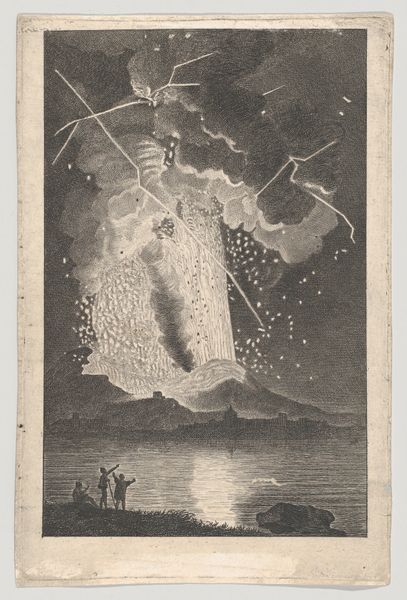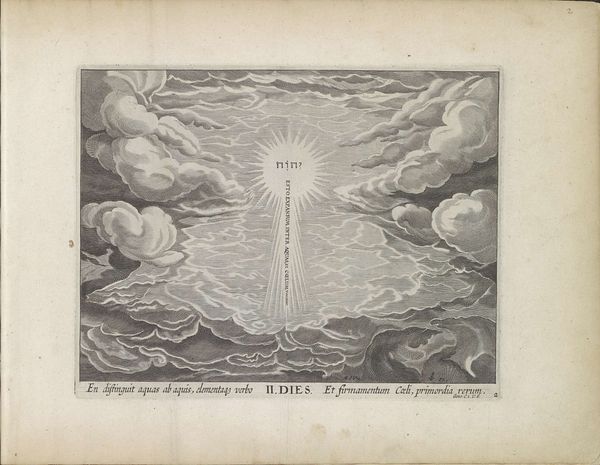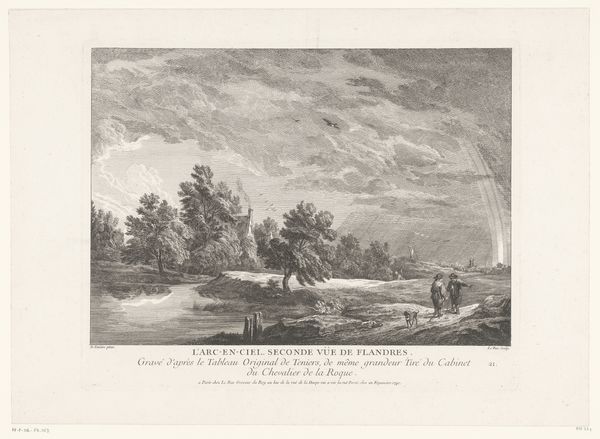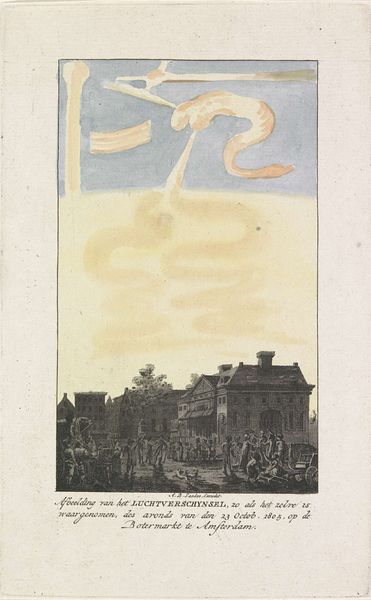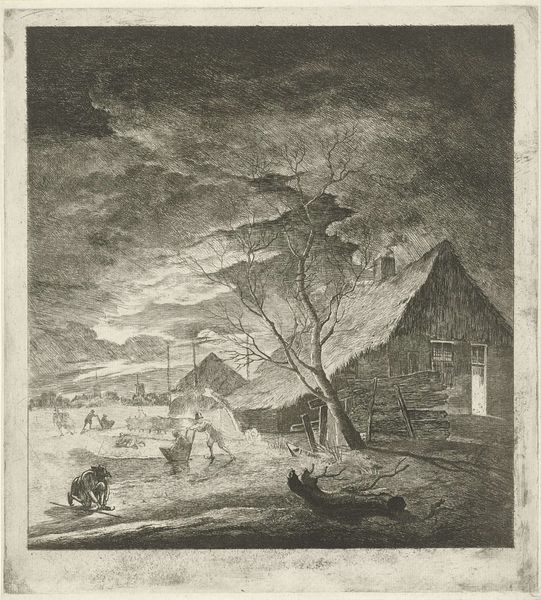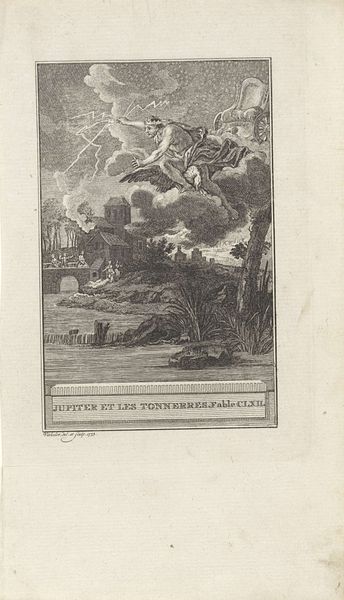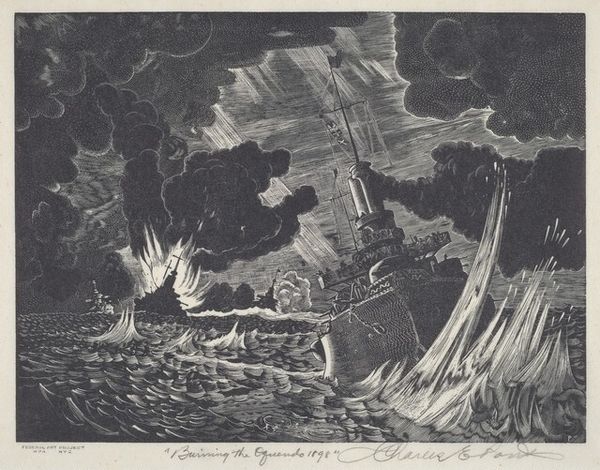
print, engraving
# print
#
landscape
#
history-painting
#
engraving
#
realism
Dimensions: height 222 mm, width 156 mm
Copyright: Rijks Museum: Open Domain
Editor: So, this engraving from 1744 by Johannes de (II) Groot, titled "The Comets of 1742 and 1744," shows a night scene with comets streaking across the sky. There are people looking at the comets, and you can see houses and what looks like a canal too. I'm struck by the contrast between the almost mundane details of the buildings and the extraordinary spectacle above. How do you interpret this work? Curator: Well, immediately, my mind goes to the material conditions that shaped this print. Engraving, as a medium, allowed for relatively wide distribution in the 18th century. This suggests an intention to disseminate information, or perhaps commentary, to a broader public. Consider the labour involved: the meticulous cutting of the plate, the inking, the printing process itself. Do you think the choice of printmaking, specifically engraving, influences how we understand the depiction of these celestial events? Editor: That’s interesting, I hadn't thought of it that way. It definitely makes me think about it not just as a picture of comets, but about the physical making and distribution of knowledge itself. Almost like a scientific diagram or early form of science communication for the masses? Curator: Precisely. The availability of materials, the skills of the engraver, the economic factors enabling the production and circulation of the print – all are critical to understanding its meaning. Was this commissioned, for whom, and why print instead of painting, for instance? Editor: Thinking about it as a commercial enterprise that produced 'art' using particular methods, it raises the question of who its intended consumer was. The materials suggest not the elite necessarily but more a middle class that wanted scientific knowledge or maybe something to display? Curator: Indeed! The print becomes less about pure aesthetics and more about accessibility, knowledge dissemination, and even the social implications of witnessing these celestial events in a particular socio-economic context. We move from contemplating the cosmos to understanding the mechanics of representation. Editor: That completely changed my perception of it. Now, I am seeing this not just as a quaint landscape but as evidence of evolving industrial approaches and how those informed societal dynamics. Thanks so much!
Comments
No comments
Be the first to comment and join the conversation on the ultimate creative platform.
